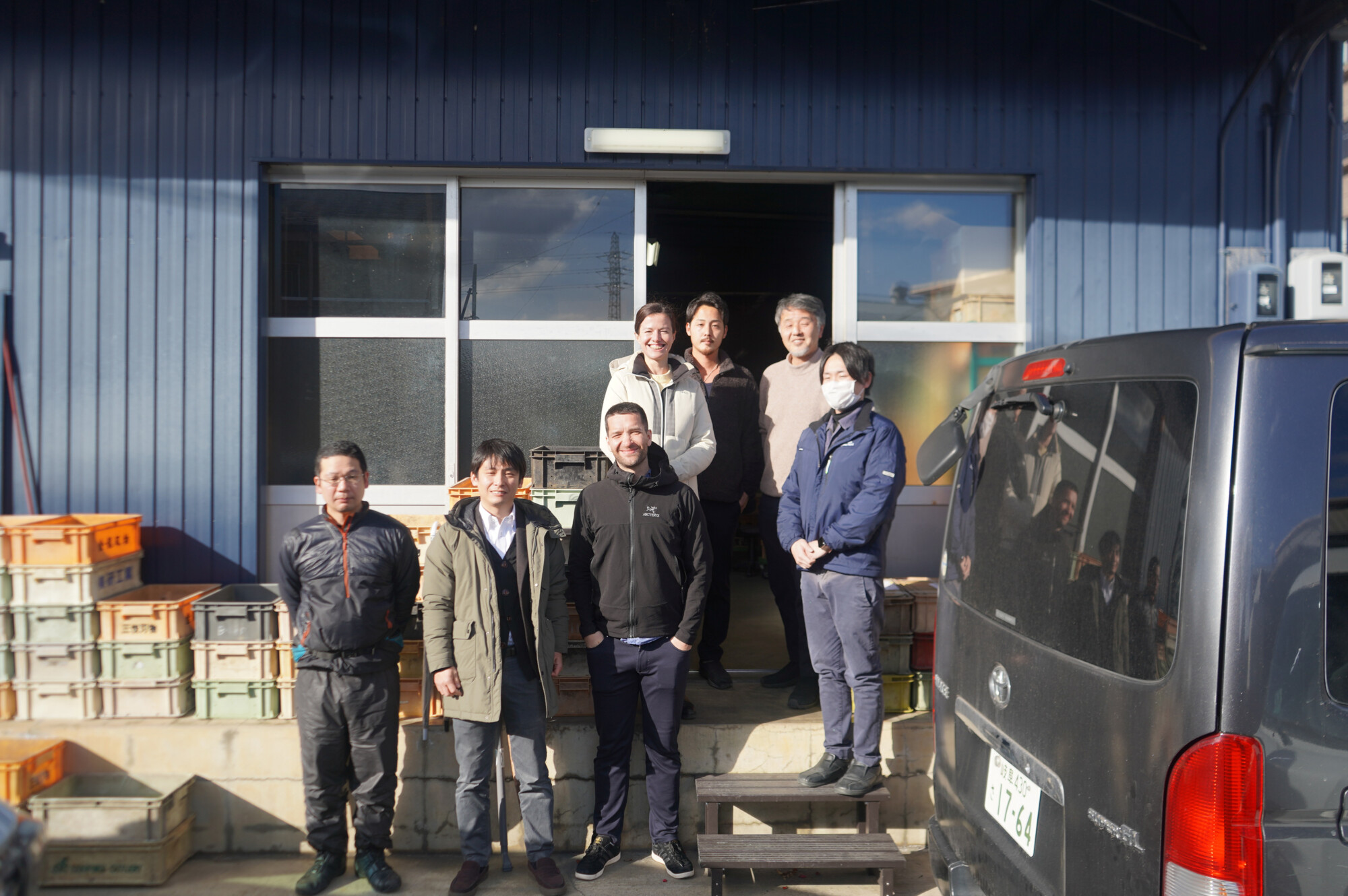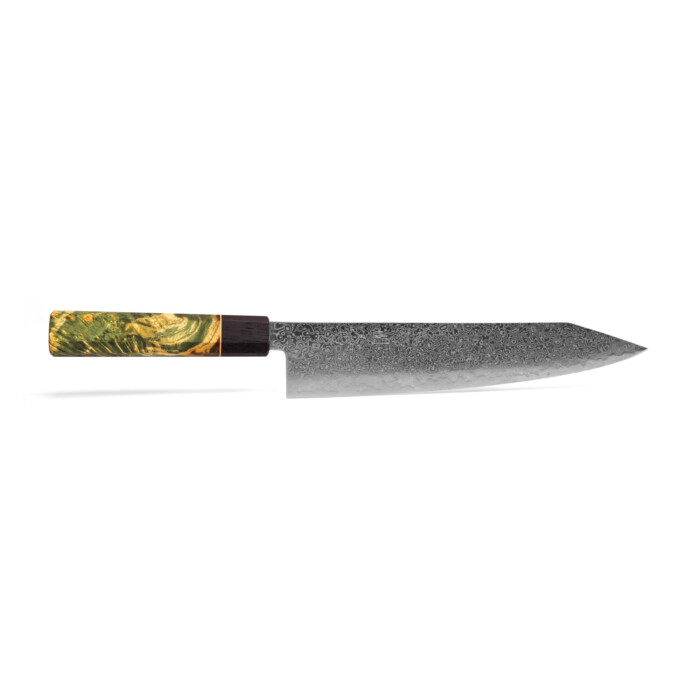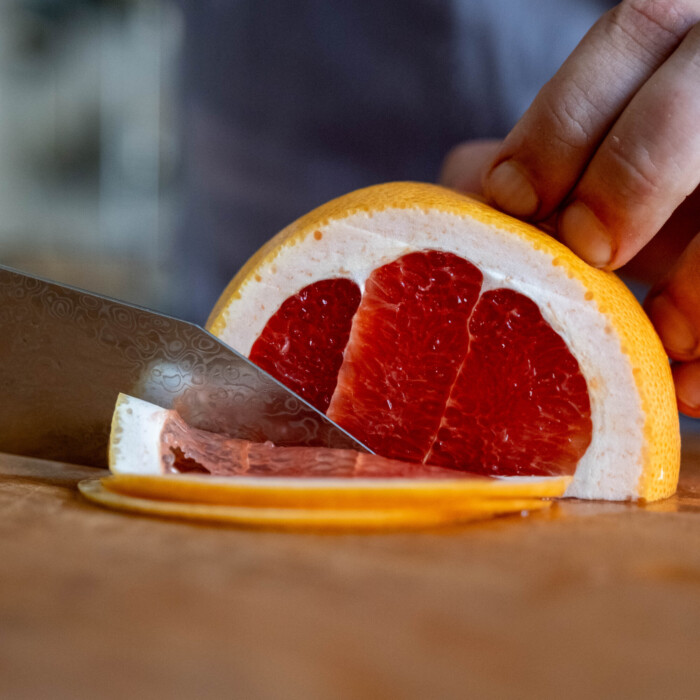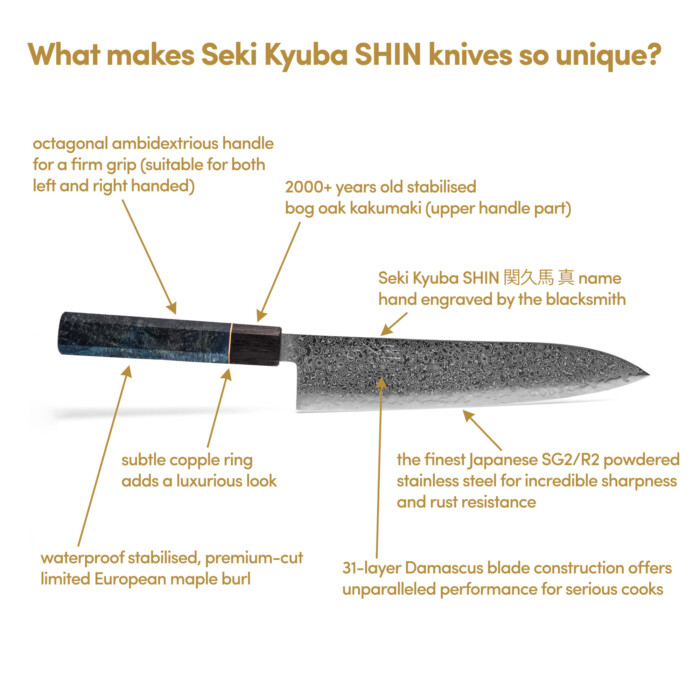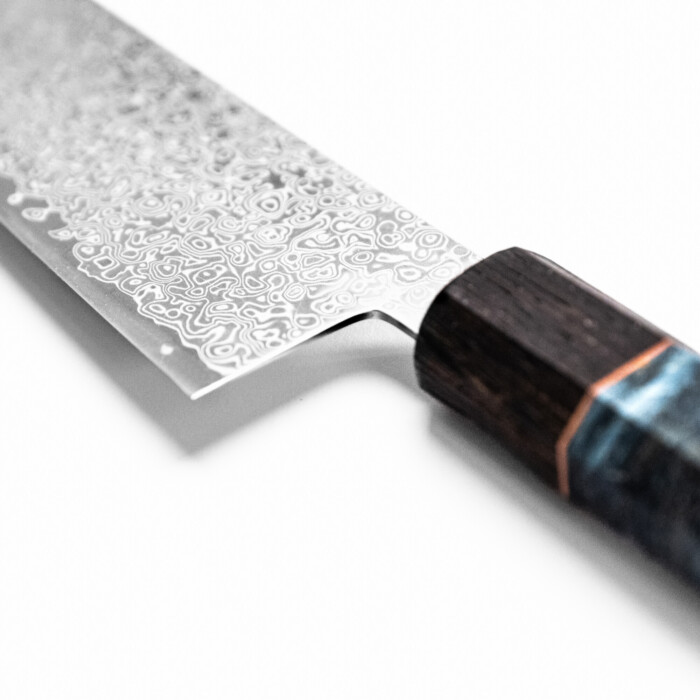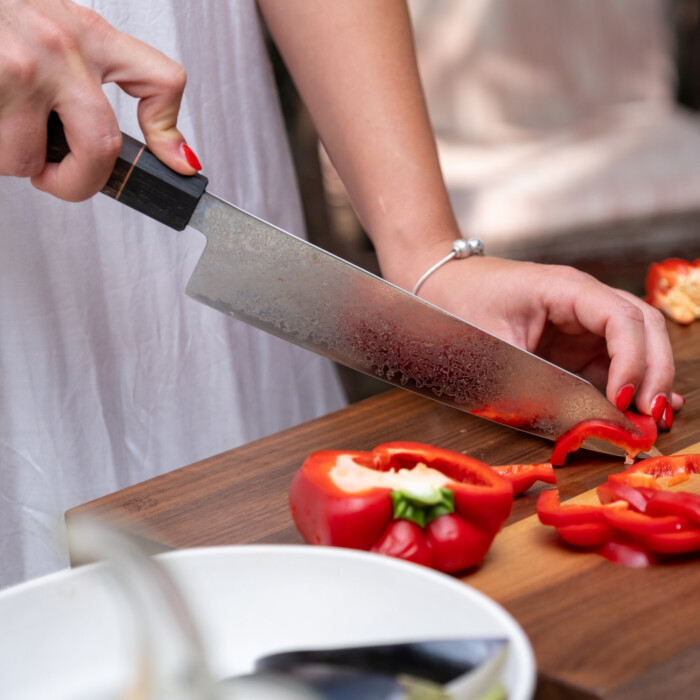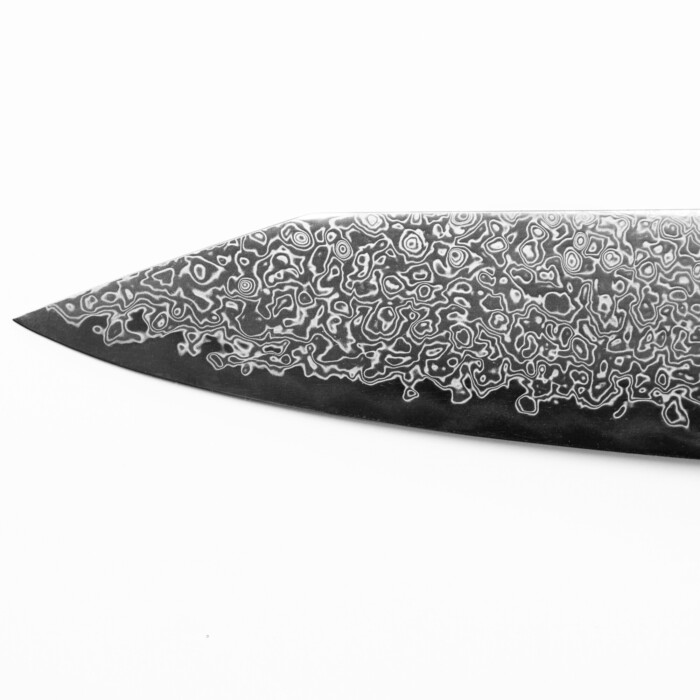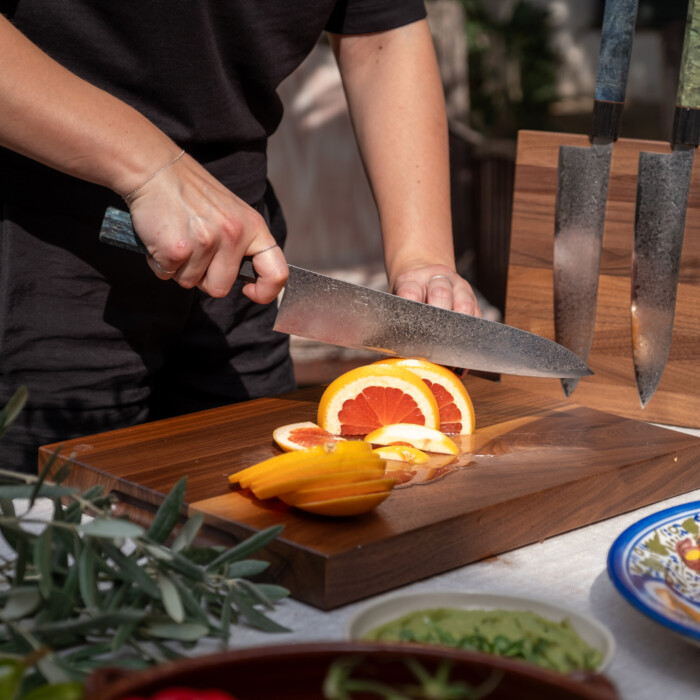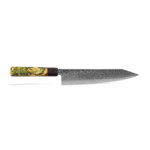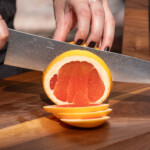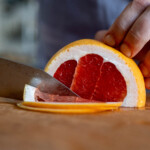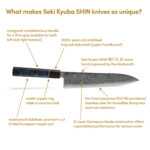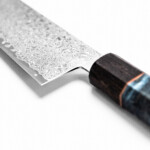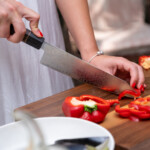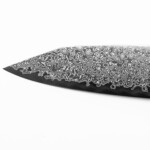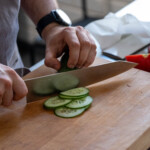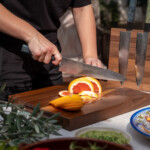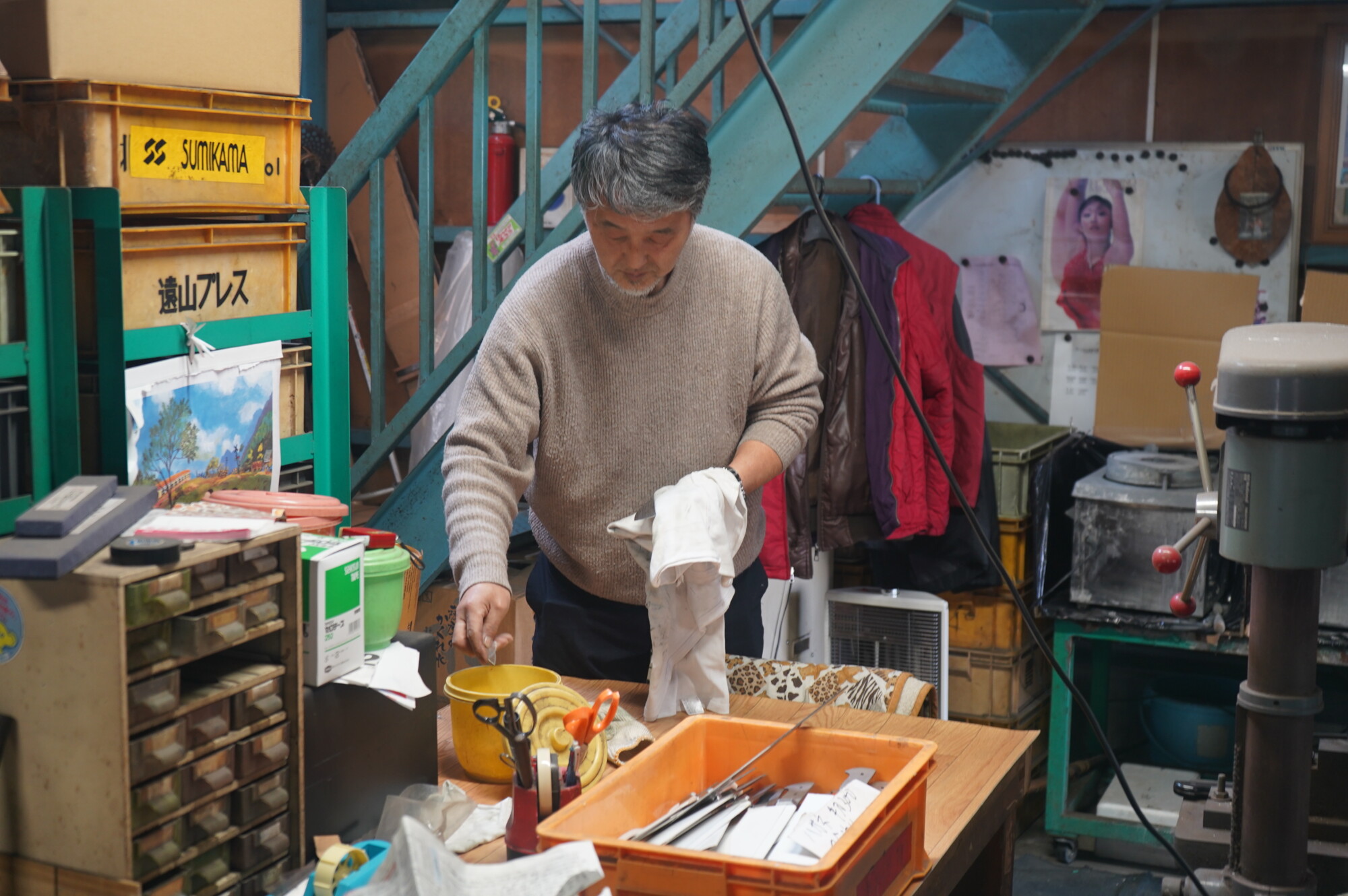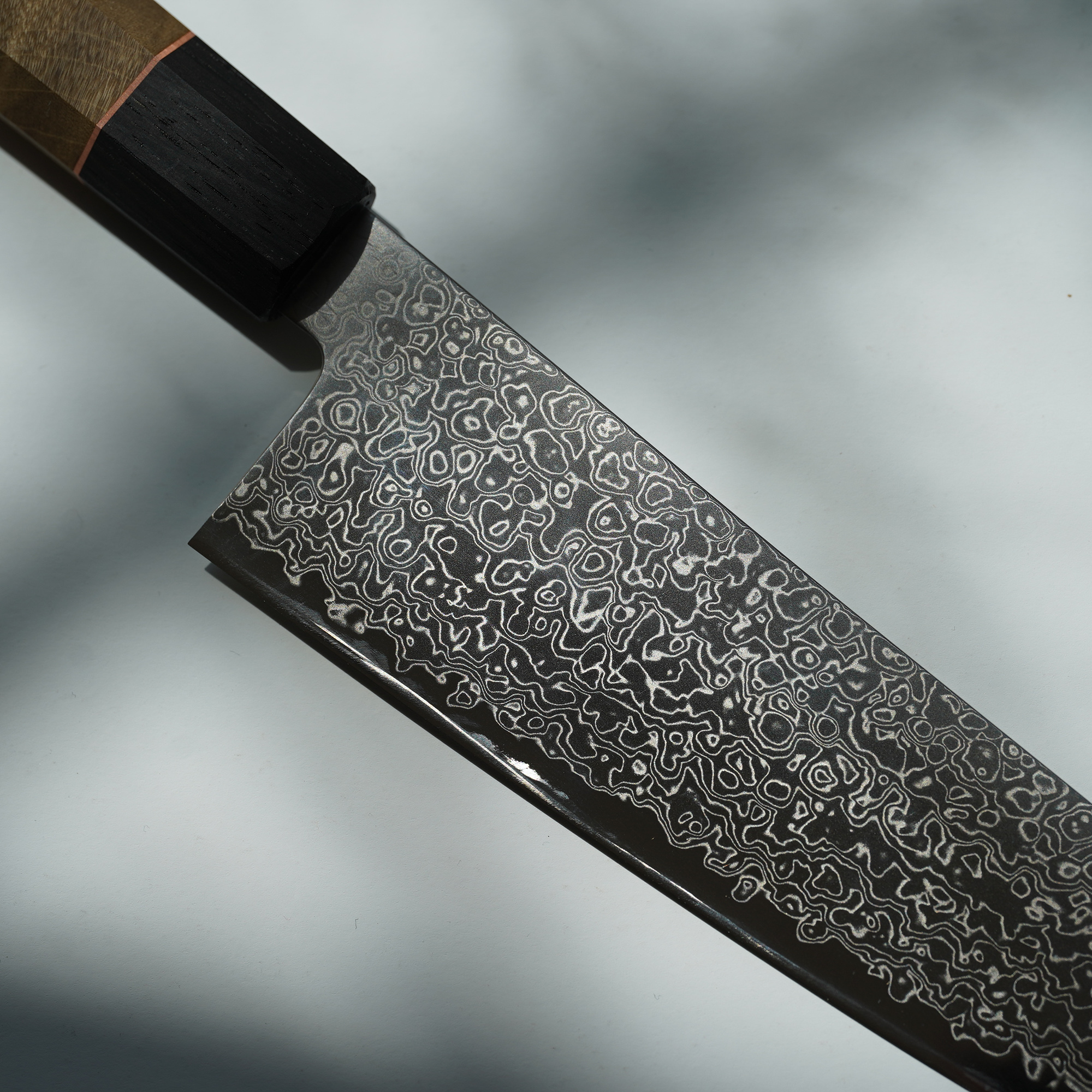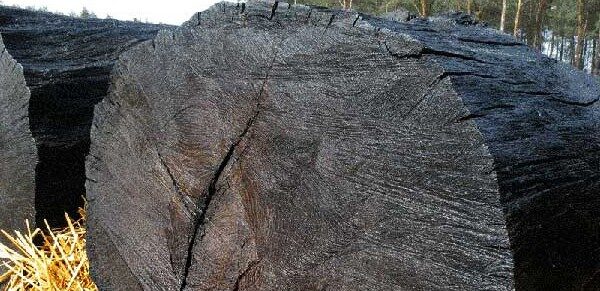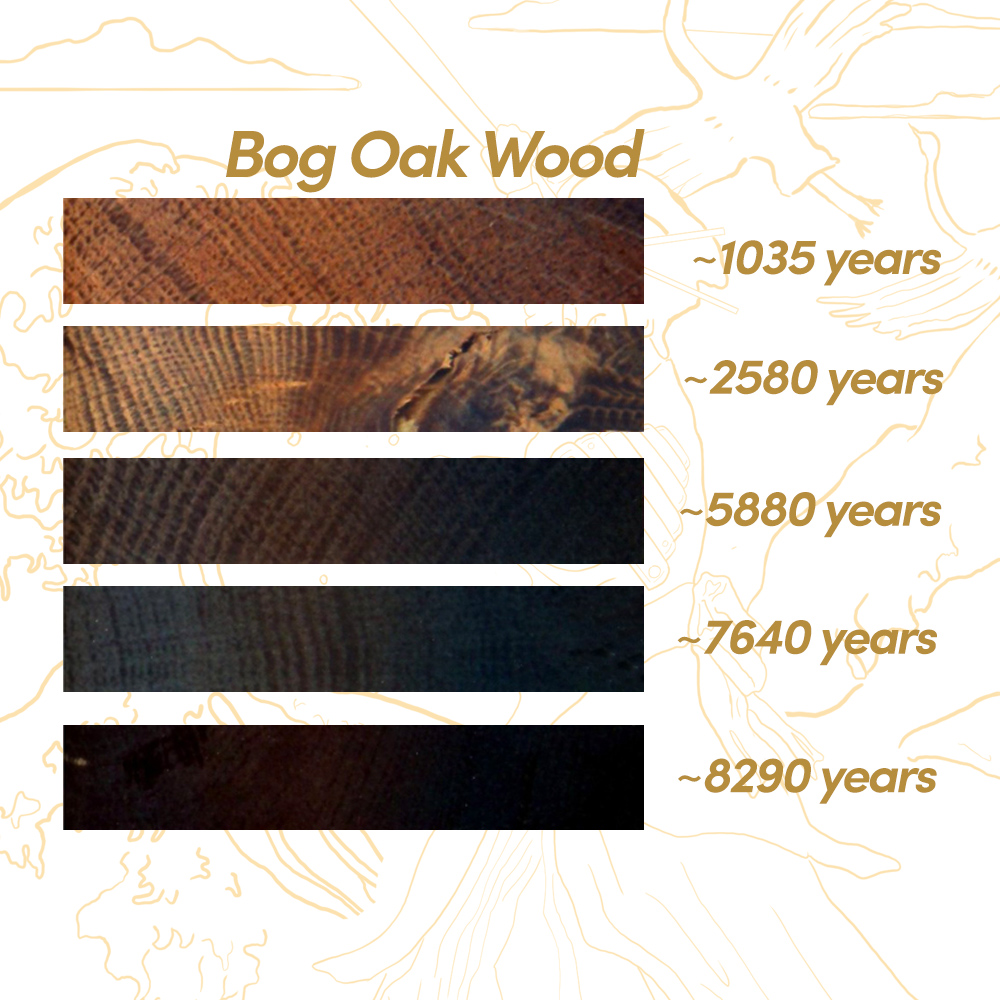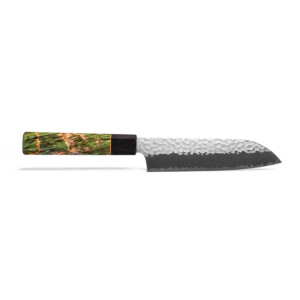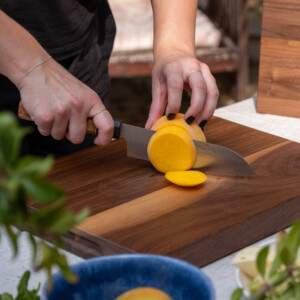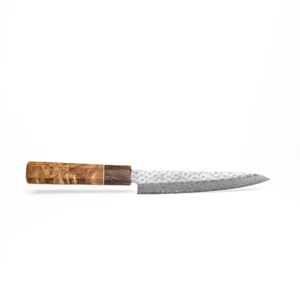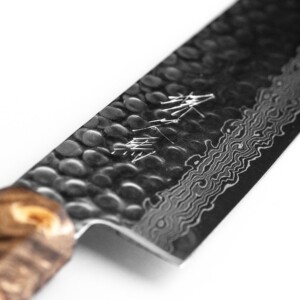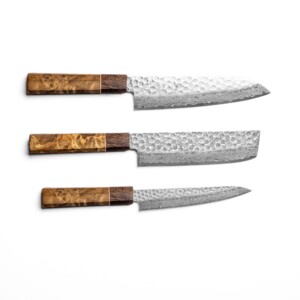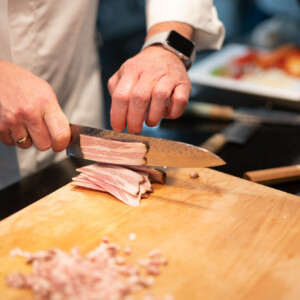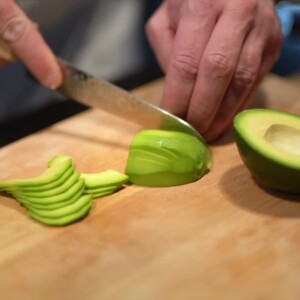If you fancy something more: The Kiritsuke
The Seki Kyuba SHIN Kiritsuke, offered in both 21cm and 24cm lengths, is a hybrid knife that combines the functionality of a Gyuto and the traditional aesthetics of a single-bevel Kiritsuke. This unique design makes it a versatile and visually striking addition to any kitchen.
Crafted with an SG2/R2 powdered steel core and a 31-layer Damascus construction, the SHIN Kiritsuke represents the pinnacle of Japanese knife craftsmanship. The SG2/R2 core provides unmatched edge retention and sharpness, whilst the 31 layers contribute to overall durability, stain resistance, and create an awe-inspiring Damascus pattern. The blade’s hammered finish, overlaying the Damascus, not only adds a stunning visual element but also helps to reduce food sticking during use.
The Kiritsuke’s flat profile and angled tip make it excellent for push-cutting and precise tip work. It excels at slicing proteins, chopping vegetables, and performing detailed cuts. The 21cm version offers more agility, while the 24cm version provides extra reach and cutting surface for larger ingredients.
Available in Mediterranean Blue, Olive Green, and Natural Brown, the SHIN Kiritsuke is a statement piece that performs as impressively as it looks. Each colour option features a handle crafted from durable, stabilised wood, providing both aesthetic appeal and a comfortable, secure grip.
If you prefer a more curved edge for rocking cuts, consider the Gyuto instead. However, if you’re looking for a unique, multi-functional knife that offers precision and visual appeal, the Kiritsuke is an outstanding choice.
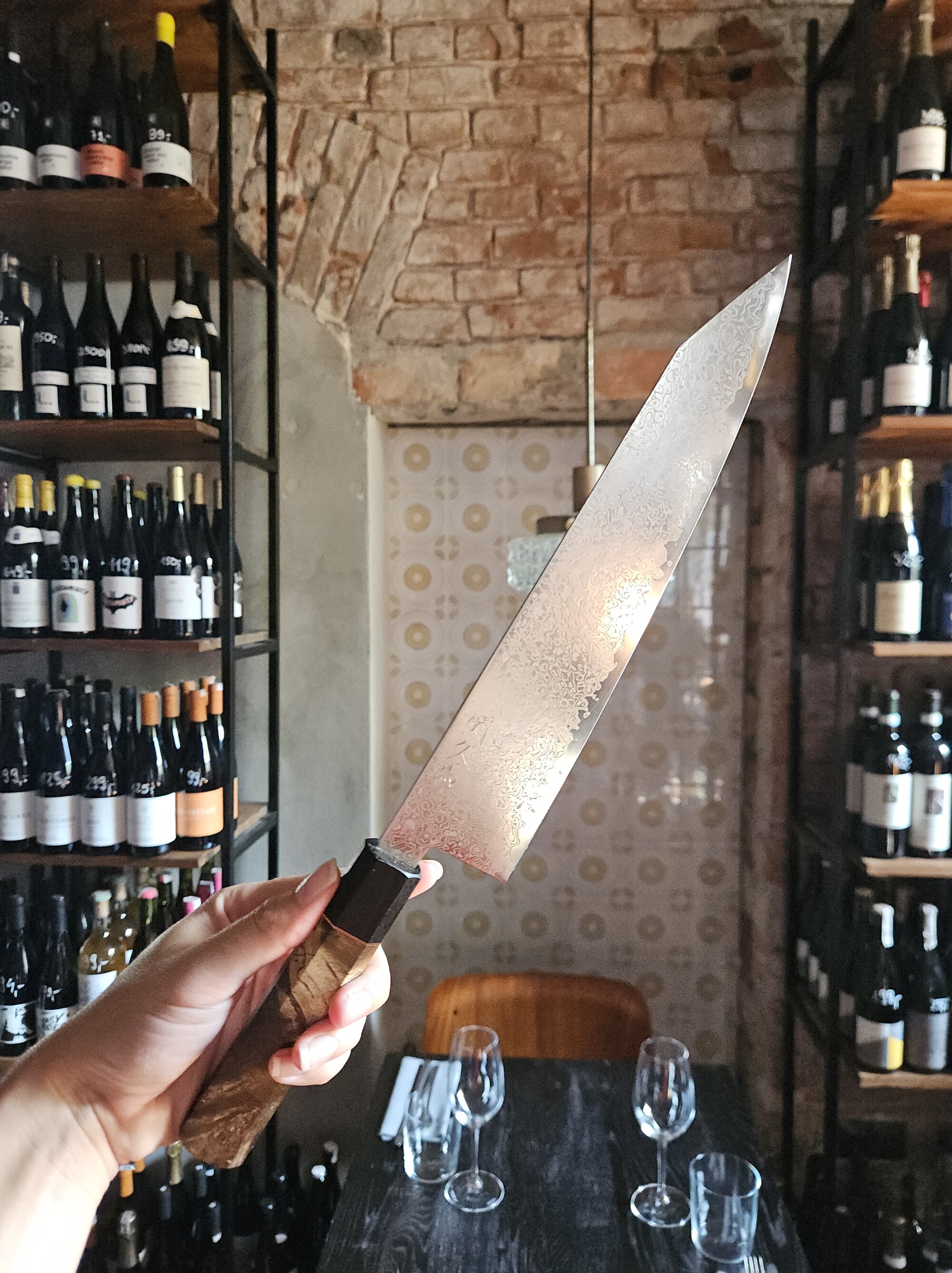
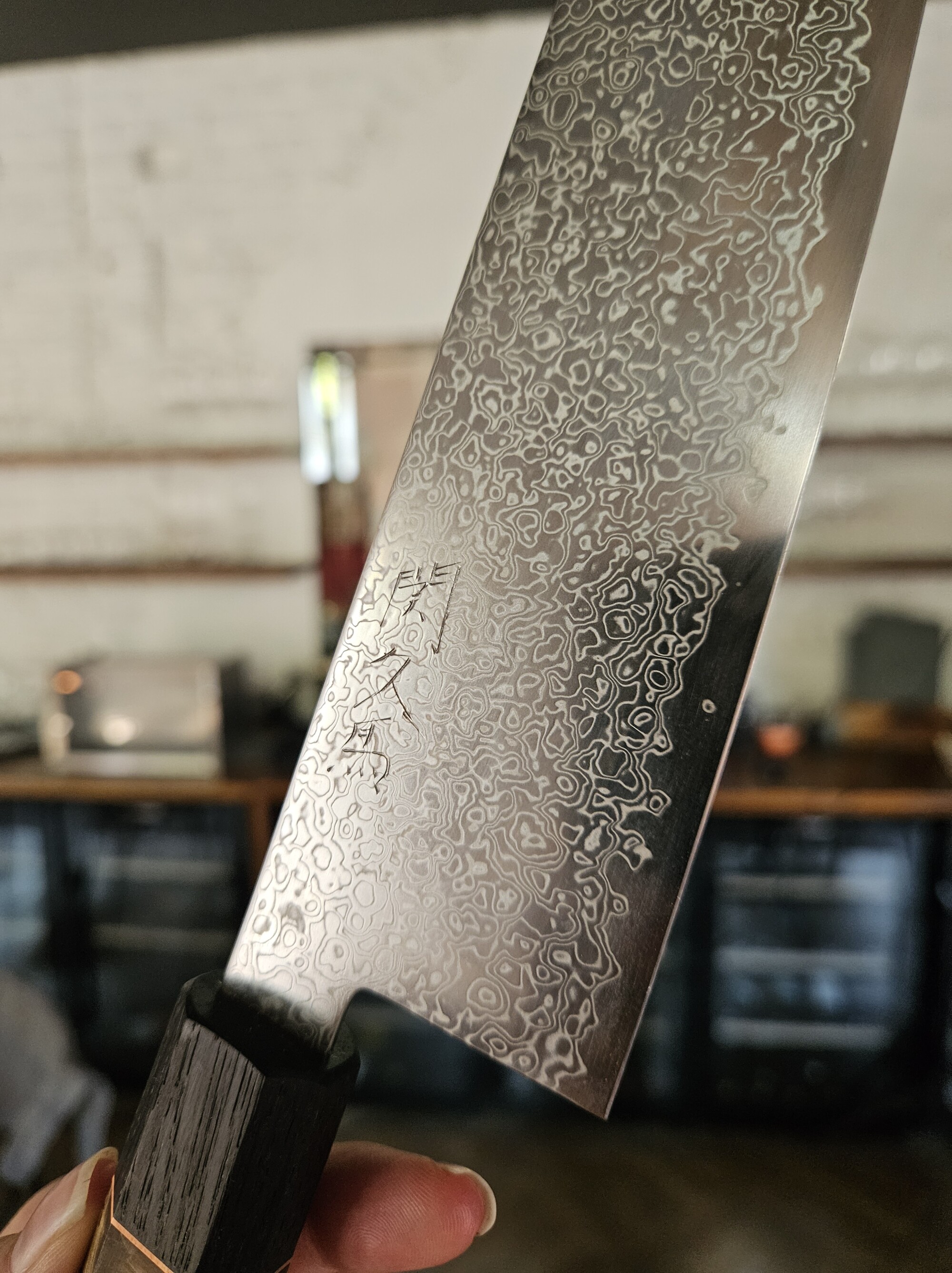
The Blade
The blade in the Seki Kyuba SHIN line is designed to make cooking more enjoyable as cutting through produce will become an effortless task. The blade is handcrafted by skilled Japanese blacksmiths in Seki, Gifu village in Japan with high-end Japanese SG2/R2 high carbon stainless powder steel, with 31-layers Damascus. SG2, also known as Super Gold 2, is a high-end, high carbon stainless steel known for being a tough steel with excellent edge retention and easy maintenance.
The sharp blade is set in a premium-cut, waterproof stabilised maple burl wood available in Mediterranean Blue, Olive Green, or Natural Brown.
The knife comes in a handcrafted, minimalist wooden box wrapped in a unique illustration strip. SG2/R2 steel offers an excellent balance between toughness, durability, and razor sharpness. The blade has an impressive Rockwell Hardness rating (HRC) of 63-64, which means the edge stays noticeably sharper for a longer time. This means you won’t have to worry about sharpening them often. The blade allows foods to be easily and promptly cut with precision.
The Handle
The beautiful handle is made with extremely limited European maple burl dyed in an Natural Brown, Mediterranean Blue or Olive Green colour and feature a subtle copper ring under the oak bog wood kakumaki (collar of the handle). The wood has to be dried for two years before it undergoes the process of stabilisation. This ensures the wood is completely waterproof to avoid bacteria growth and is able to last generations.
The blade’s kakumaki (collar) is made with oak bog wood. A wood ranging from 2,500 to 5,000 years in age. Its age and living conditions give it a unique character and rich natural colour variation determined by its age. Giving you a knife with a rich history.
The stabilised premium-cut maple burl is shaped into an octagonal shaped ambidextrous handle to give you a firm grip on the knife. Not only are the handles aesthetically pleasing, they are also perfectly balanced, light and comfortable. This allows for maximum precision and more controlled movements during use.
No two handle colours or patterns are ever the same as the natural properties of each wood block are unique and will absorb the colour dye differently. This will give each knife a beautiful unique look and it can serve as an unforgettable gift.
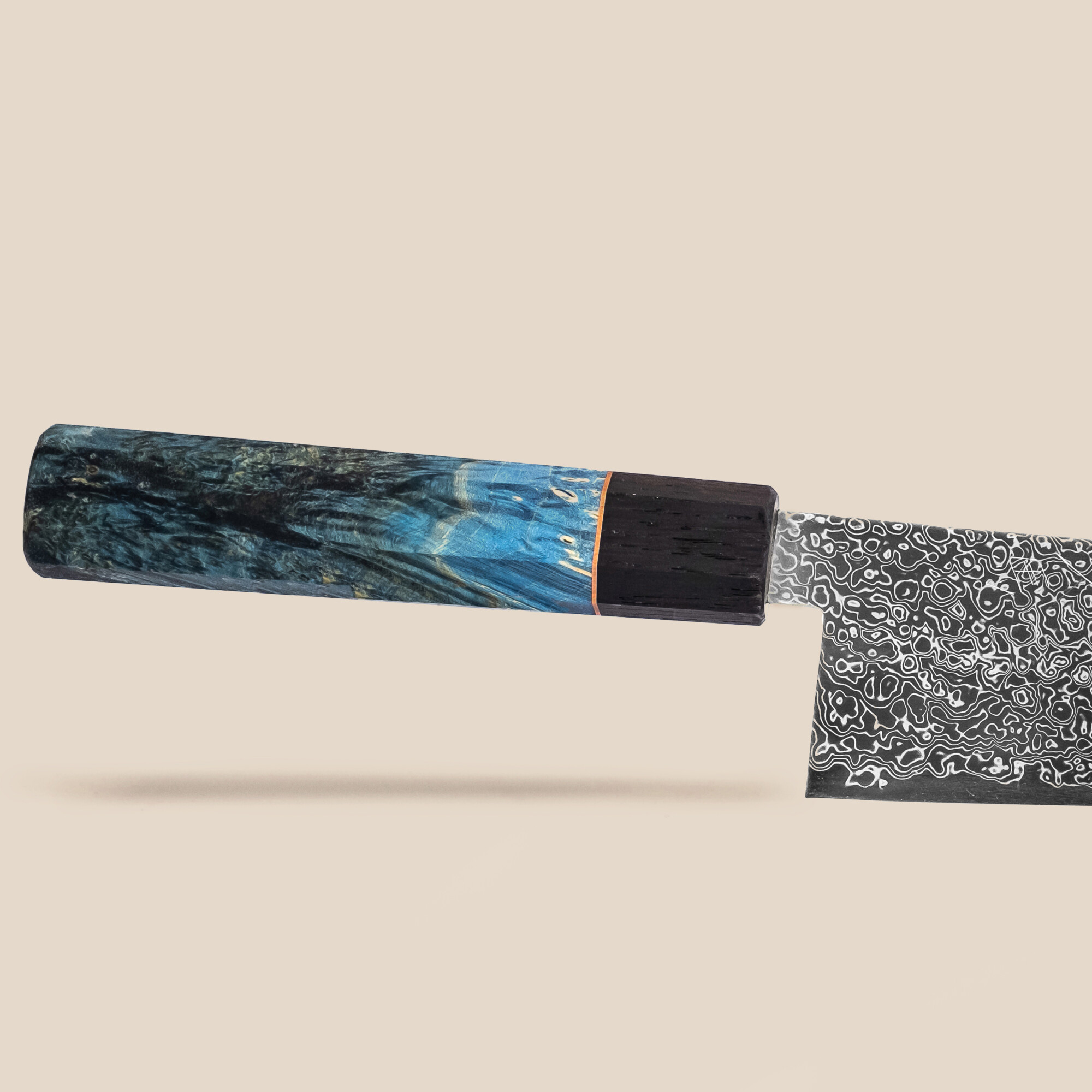
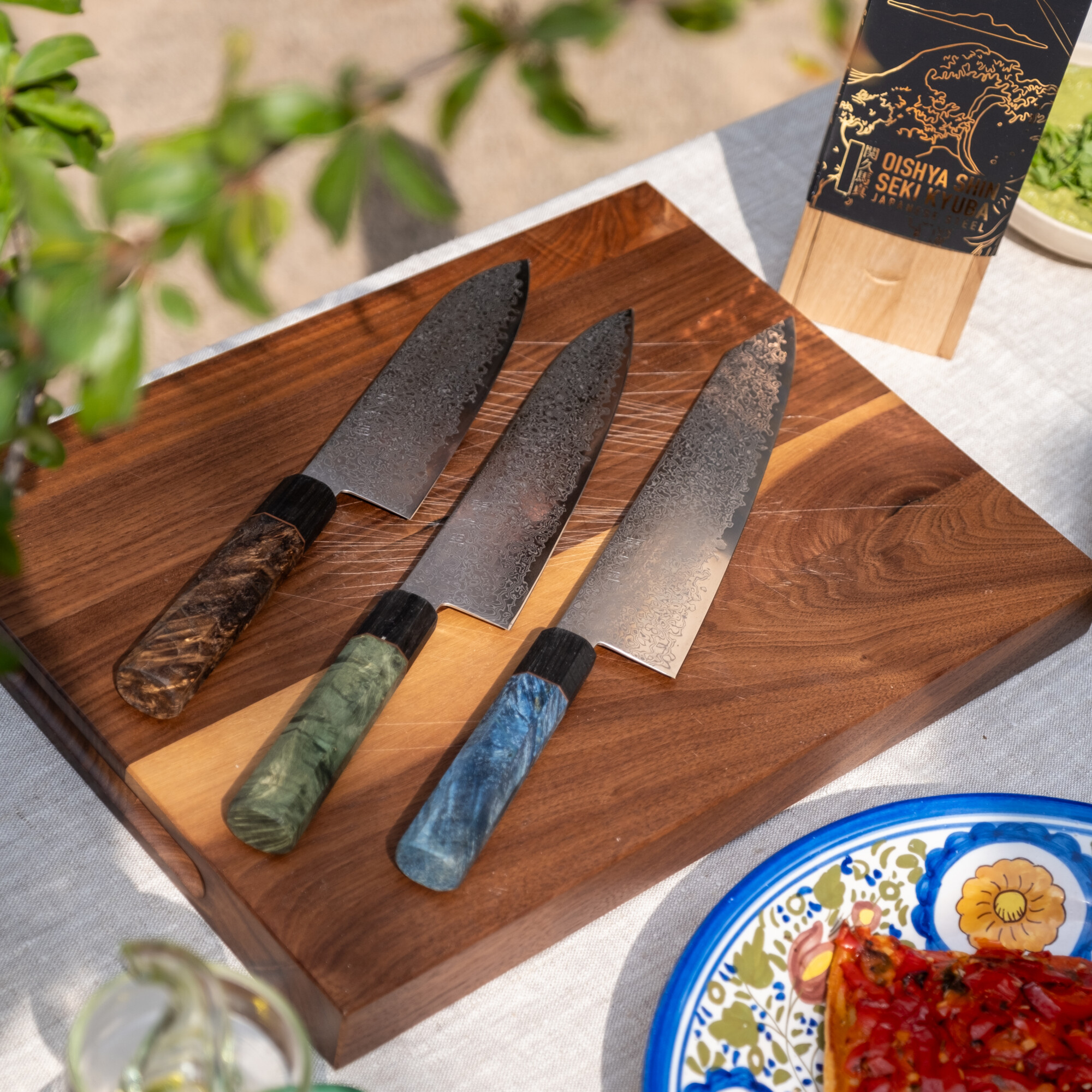
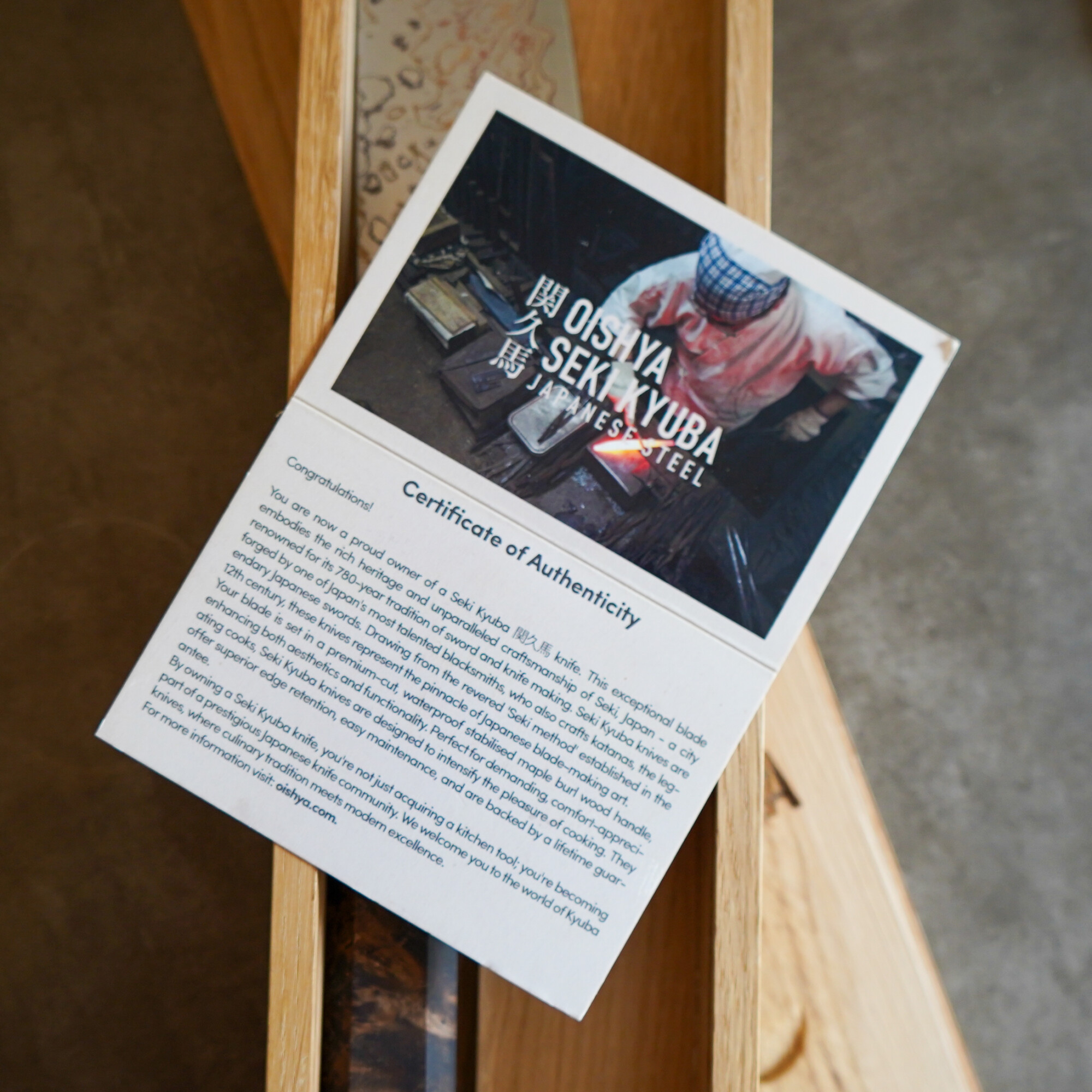
Because Presentation Matters Just As Much
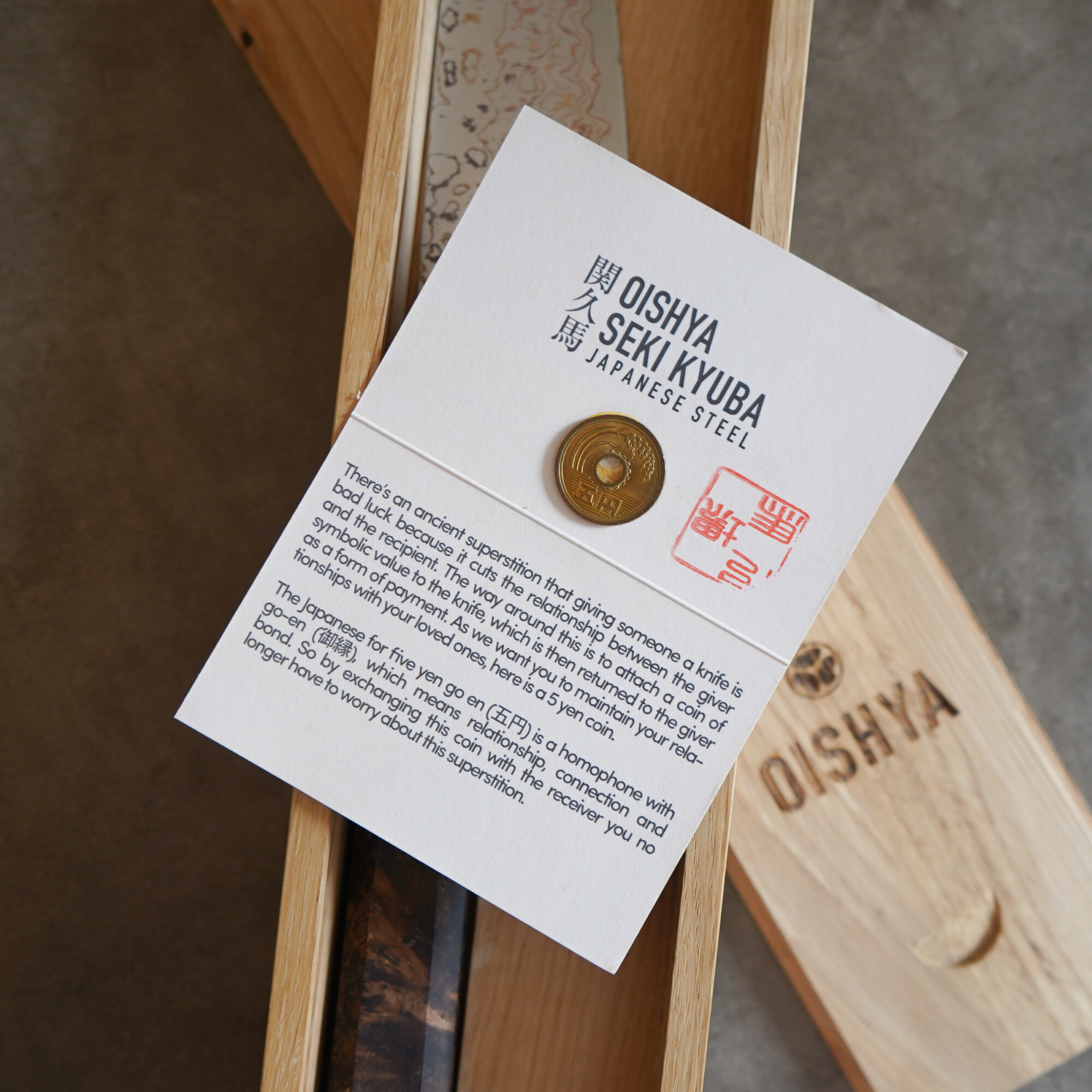
All our Seki Kyuba SHIN kitchen knives arrive in a handcrafted, minimalist European oak wooden box with a delicate waxed finish. The box is wrapped in our signature Oishya illustration strip featuring the Onna Bugeisha – legendary Japanese female warriors.
Inside, you’ll discover a beautifully designed certificate with two sides, each telling an important part of your knife’s story.
On one side, you’ll find a genuine 5 yen Japanese coin attached with an elegant note. There’s an ancient superstition that giving someone a knife is bad luck because it “cuts” the relationship between giver and recipient. The way around this? Attach a coin of symbolic value to the knife, which the recipient returns as payment.
We chose the 5 yen coin specifically because in Japanese, go en (五円) is a homophone with go-en (御縁), meaning “relationship,” “connection,” and “bond.” By exchanging this coin with the receiver, you’re not just avoiding bad luck – you’re actively strengthening your connection.
The reverse features your knife’s Certificate of Authenticity, documenting genuine Oishya craftsmanship from Japan’s legendary blade-making regions. Each certificate is hand-stamped with our traditional Japanese hanko seal – a mark of authenticity used in Japan for centuries.
The Blacksmith
The spirit of Samurai “Bushido” has never faded away from the history of Japan. The art of greatest sword smiths has been inherited through 780 years till now and it’s present in Japan’s Samurai Knife City, Seki in Gifu Prefecture, where Seki Kyuba knives are made.
High quality katana and kitchen blades are made with Japan’s traditional swordsmith technique and the latest technology, and are famed throughout the world today, especially high end kitchen knives.
Our partnership with one of the most talented and prominent blacksmiths of Japan resulted in Seki Kyuba kitchen knives, that are perfect for those that demand the highest quality. Being part of the Japanese knife community and owning a knife like this is a great honour and pleasure. We welcome you to Kyuba knives world.
